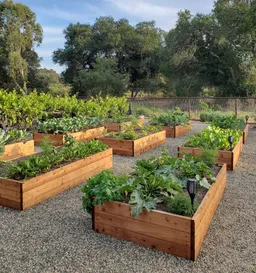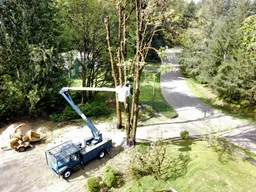
Tree Cabling
Ensuring Stability and Longevity: The Importance of Tree Cabling for Split-Top Trees
Trees are not only vital contributors to our environment, providing oxygen, shade, and habitat for wildlife, but they also hold aesthetic and sentimental value in landscapes worldwide. However, certain trees, particularly those with split tops or multiple trunks, may face challenges in maintaining their structural integrity over time. Fortunately, tree cabling offers a solution to help stabilize split-top trees, ensuring their longevity and safety for years to come.
Understanding Split-Top Trees
Split-top trees, also known as multi-stemmed or codominant trees, are characterized by having two or more main stems emerging from a single trunk, often forming a Y-shaped or forked structure at the top. While these trees can possess unique beauty and charm, their structural configuration presents inherent risks, especially during periods of heavy wind, rain, or snow. The junction where multiple stems meet is particularly vulnerable to splitting or failure under stress, potentially leading to branch or trunk breakage and tree decline.
The Role of Tree Cabling
Tree cabling is a technique used by certified arborists to reinforce the structural stability of trees, especially those with weak or compromised branch unions. The process involves strategically installing cables and hardware within the canopy of the tree to redistribute weight, reduce stress on weak branches or stems, and prevent further splitting or failure. By providing additional support and bracing, tree cabling helps mitigate the risk of structural damage and enhances the overall safety of the tree.
Benefits of Tree Cabling for Split-Top Trees
- Stability: Tree cabling strengthens weak branch unions and reduces the likelihood of splitting or breakage, thereby enhancing the stability of split-top trees, especially during adverse weather conditions.
- Safety: By preventing branches or stems from falling or splitting, tree cabling helps mitigate the risk of property damage, personal injury, or loss of life caused by falling debris.
- Longevity: Investing in tree cabling prolongs the lifespan of split-top trees by minimizing structural damage and promoting healthy growth and development over time.
- Aesthetic Preservation: Cabling allows split-top trees to retain their natural beauty and form while addressing structural weaknesses, preserving their aesthetic appeal in the landscape.
- Cost-Effectiveness: Compared to tree removal or emergency tree care services following storm damage, tree cabling is a proactive and cost-effective measure to protect valuable trees and prevent future expenses associated with tree failure.
Professional Tree Cabling Process
Tree cabling should only be performed by qualified arborists with expertise in tree care and safety. The process typically involves the following steps:
- Assessment: We evaluate the condition of the split-top tree, identifying weak branch unions, structural defects, and areas of concern.
- Cabling Plan: Based on the assessment, we develop a cabling plan tailored to the specific needs and characteristics of the tree, determining the optimal placement of cables and hardware for maximum support and stability.
- Installation: Using specialized equipment and techniques, the arborist installs high-strength cables and hardware in the canopy of the tree, securing weak branch unions and reinforcing structural integrity.
- Monitoring and Maintenance: After installation, regular monitoring and maintenance are essential to ensure the effectiveness of the cabling system and address any changes or issues that may arise over time.
We Service Olympia Washington and the Surrounding area.


